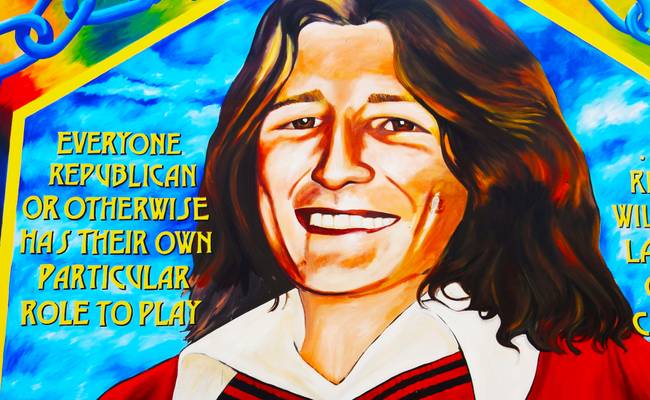
Edenderry

by Dominic Nessi
- Robert Gerard Sands (9 March 1954 – 5 May 1981) was a member of the Provisional Irish Republican Army (IRA) who died on hunger strike while imprisoned at HM Prison Maze in Northern Ireland. Sands helped to plan the 1976 bombing of the Balmoral Furniture Company in Dunmurry, which was followed by a gun battle with the Royal Ulster Constabulary. Sands was arrested while trying to escape and sentenced to 14 years for firearms possession.
He was the leader of the 1981 hunger strike in which Irish republican prisoners protested against the removal of Special Category Status. During Sands' strike, he was elected to the British Parliament as an Anti H-Block candidate. His death and those of nine other hunger strikers was followed by a new surge of IRA recruitment and activity. International media coverage brought attention to the hunger strikers, and the republican movement in general, attracting both praise and criticism.
Murals in Northern Ireland have become symbols of Northern Ireland, depicting the region's past and present political and religious divisions.
Belfast and Derry contain arguably the most famous political murals in Europe. It is believed that almost 2,000 murals have been documented since the 1970s. In 2014, the book, The Belfast Mural Guide estimated that, in Belfast, there were approximately 300 quality murals on display, with many more in varying degrees of age and decay. Murals commemorate, communicate and display aspects of culture and history. The themes of murals often reflect what is important to a particular community. A mural therefore exists to express an idea or message and could generally be seen as reflecting values held dear to that community.
Thanks to all Phoide contributors to Edenderry!
Most notably Dominic Nessi.